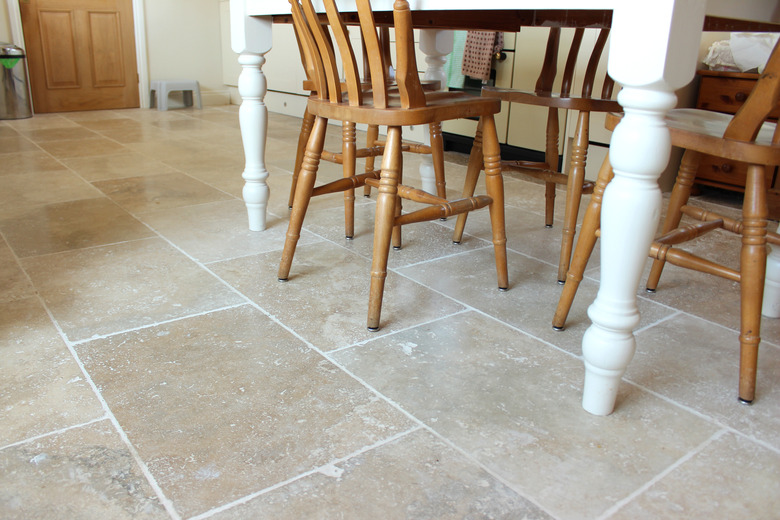How To Clean Travertine Floors
Travertine is formed by the precipitation of calcium, and is seemingly one of the most durable flooring options available. If you have travertine floors, then you know that regular care and maintenance will keep that natural stone in its gorgeous state for decades.
Maintenance for Good Measure
Maintenance for Good Measure
That wide expanse of gleaming travertine won't stay that way without a little bit of effort by its owner. When dirt and dust are allowed to gather on the surface of the travertine floor tiles or along the rough grout lines it can eventually create cracks and swaths of dark grime.
To significantly prolong the life of the stones, sweep or dust the tiles daily or at least weekly.
When Travertine Needs a Deep Clean
When Travertine Needs a Deep Clean
For deeper cleaning, a commercial cleaner such as a granite gold stone and tile floor cleaner can add a beautiful patina to the stone, as well as remove grime, stains or traces of mold that has taken root on the patchy surface or deep in the grout.
Mix together a simple solution of warm water and a drop of dish washing liquid in a gallon bucket. This will clean the stone without damaging it or causing discoloration, chipping or weak spots in the surface of the travertine tiles.
Limestone travertine stone soap is specially formulated to clean honed, tumbled or textured travertine. It doesn't require a rinse and produces a protective film that helps maintain the natural beauty of the stone while repelling dirt and dust from the tile's nooks and crannies.
Repairing Travertine Tiles Using Travertine Epoxy Resin
Repairing Travertine Tiles Using Travertine Epoxy Resin
If you find minor cracks, chips or divots that aren't part of the natural makeup of the stone that you chose, then you will want to repair it before you put down any cleaners. Gather a putty knife, roller and travertine epoxy resin to address any marks or imperfections in the travertine tile.
Apply the travertine epoxy resin to any small chip or crack, then smooth it in with the putty knife. Use the roller to even out the resin over the top of the travertine, making sure not to spread it on too thick and create an unsightly smooth patch over the stone.
Sealing Travertine for a Clean Look
Sealing Travertine for a Clean Look
To keep travertine in its original and immaculate condition, you may want to seal it.
Travertine epoxy resin can also be used if you want to create a slick surface over a pocked travertine tile, which can make cleaning the floor easier in high-traffic areas. Use a paint roller to spread the epoxy over multiple stones. Work in small batches from one corner of the room to an entrance.
Prep Work for Cleaning Travertine
Prep Work for Cleaning Travertine
No matter what type of stone cleaner you decide to use, donning the correct attire will help you get into the nooks and crannies of travertine. Wear a pair of good gloves and wrap around glasses to keep dust or detergent from flying up and into your eyes. Always test a cleaner on a tile that is out of the way to ensure it won't damage or discolor the tile.
If you are scrubbing the floor by hand, detergents in cleaners can get under fingernails and irritate skin as you brush away. Have a toothbrush with soft bristles ready for those stubborn stains that can settle into grout grooves. A stack of clean towels can buff away the residue formed from the cleaning agents to truly get the travertine to shine.
